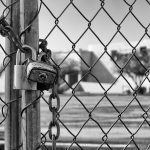Closing schools is the wrong response to COVID-9 threat, say infectious disease experts
The UK is closing its schools indefinitely, but Australian experts say this is a “knee-jerk” response without medical or epidemiological justification.
In fact, an investigation in Sydney has concluded that children are more likely to catch COVID-19 in the home, from adults, than from each other.
David Isaacs, professor of paediatric infectious diseases from the Children’s Hospital at Westmead and Sydney University, told TMR that COVID-19’s behaviour was entirely different from influenza’s when it came to the very young.
“We know that there are a few children who have been infected [with SARS-CoV-2] within schools and they haven’t passed it on to large numbers of other children in the school,” Professor Isaacs said.
“If you’ve got influenza and one child gets it, the whole class gets it. You can stop a nasty flu outbreak by closing schools. So that makes some sense.
“But to say children might be spreading [COVID-19] and therefore we should close schools doesn’t seem to me very sensible. The advisory panel is probably the top brains in Australia and they’re saying, Steady on: there are knock-on effects from closing schools. Who do you think is going to look after the kids? It’s going to be the grandparents.
“Then it disrupts everyone’s working life and [has psychological effects] on the kids.
“[ABC presenter and former paediatrician] Norman Swan’s out there saying we should be closing the schools. That seems to me be a very knee-jerk sort of comment. Most spreading is occurring within homes.”
Professor Isaacs said the level of fear in the community was disproportionate to the threat, which was far less than that posed by diseases less than a century ago.
“As an infectious disease physician, I’m just throwing my hands up and saying, Hey, don’t get so panicked about this. It’s not going to be the end of civilisation as we know it.”
Thousands of doctors have signed various letters and petitions to the government demanding a more extreme response to the outbreak, calling for schools, gyms, pubs, bars, theatres, cinemas, places of worship and so on to be closed for three to four weeks.
But neither the RACGP nor the AMA has backed these calls, instead supporting the government’s measured approach.
“At the moment we’d be following the advice we’ve been given,” RACGP president Dr Harry Nespolon told the ABC yesterday, “which is that kids are at low risk and to keep the health system going we need as many people working as possible [and to minimise] the risk of staff being exposed and having to stay home in self-isolation for two weeks.
“So at the moment from what we know, keeping the schools open seems to be the right thing in terms of medical capacity and, more importantly, keeping children safe.”
Professor Tania Sorrell, director of the Marie Bashir Institute for Infectious Diseases and Biosecurity, said in the same interview that if children do become infected, “they’re more likely to get it at home from adults”.
She cited the done by CHW and the National Centre for Immunisation Research that tested all the contacts of a few infected children in Sydney and found they had not spread the virus to their classmates.
“I completely understand the anxiety … but I don’t believe the data we have at the moment [shows] that will make the kids safer. If you look at the potential impact on older people who may have to look after them – in the US it’s estimated that up to 40% of children would have to be looked after by their grandparents.
“In this country we estimate around 15% of the total workforce would have to stay home and an even higher percentage of healthcare workers. So we need to balance the risks and potential detriments, recognising that the elderly have a much higher mortality rate.”
The lack of severe COVID-19 illness in children – similar to the first SARS in 2002-03 – was observed early on but has not yet been satisfactorily explained.
“The question that still not really resolved is whether [these coronaviruses] don’t infect children so much, or whether they do infect children but they don’t affect children so much,” Professor Isaacs said.
“From a scientific point of view, we haven’t got a clear explanation.”
Some have speculated that ACE2 receptors, which the virus binds to in the upper and lower respiratory tract, are expressed less in children, but Professor Isaacs says there is no actual evidence for this.
“Showing that children do or don’t express receptors has never been terribly successful,” he said.
The idea that children have stronger immune systems also falters when it comes to very young infants.
“We’ve had babies, newborn babies, infected with the virus – the mum’s had it at birth and the babies get infected – but they don’t seem to have anything much in the way of symptoms. They don’t get nasty pneumonia. And yet little babies are more vulnerable to infection than almost any other age in life. So if that was really the case you would expect the babies to get in trouble.”
Professor Isaacs said one possible factor in severe disease was an excessive immune response, or cytokine storm.
“To get a really nasty pneumonia, you need a very vigorous host response, because your host response does use some damage in the process of trying to deal with the virus. That’s what we think happened in 1919 with pandemic flu, which tended to hit young adults and be very nasty in them.
“That’s one possibility that doesn’t really explain it all – why do the elderly get such bad mortality? You’d have to say, the elderly can’t cope with it at all and the virus goes spreading.
“Well, we’d expect that to happen in a one-year-old, for example. It doesn’t.
“We’ve seen just three kids with COVID-19 infection. Two of them had a cold and one of them had nothing. No symptoms – it was just picked up because one of the family members had it.”
Professor Isaacs said there was probably some genetic component, noting that younger adults had been worse affected in some populations – Italy and Iran – than others. This still didn’t explain why children everywhere were less affected.
He said part of the difficulty with COVID-19 was disease ascertainment, and that he was sure there was a large infected but asymptomatic population that was left out of the estimates of what proportion got worse illness.
The widely cited 80:20 ratio of mild to severe cases was probably “nonsense”.
“I think the 80:20 is the ones we diagnose,” he said. “But smouldering underneath are a whole load of others. I think the real number is actually much more like 90:10 or 95:5.”





